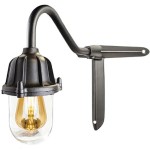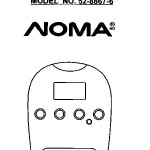How To Remove Paint From Plastic Outdoor Furniture
Plastic outdoor furniture offers durability, affordability, and weather resistance, making it a common choice for patios, decks, and gardens. However, accidental paint splatters, unwanted DIY makeovers, or simply years of accumulated paint can detract from its appearance. Removing paint from plastic requires careful consideration to avoid damaging the underlying material. The correct method depends on the type of paint, the type of plastic, and the desired outcome.
This article provides a comprehensive guide to safely and effectively removing paint from plastic outdoor furniture, outlining various methods, necessary precautions, and step-by-step instructions for achieving optimal results.
Identifying the Type of Paint and Plastic
Before attempting any paint removal method, it is crucial to identify the type of paint and plastic involved. Different paints react differently to solvents and abrasives, and certain plastics are more susceptible to damage than others. Common types of paint found on outdoor furniture include latex, acrylic, oil-based, and spray paint. The original packaging or manufacturer's information may provide clues about the paint type. If the information is unavailable, consider testing a small, inconspicuous area with different solvents to observe the reaction. Softening or lifting of the paint indicates a potential match.
Similarly, identifying the type of plastic is essential. Common types of plastic used in outdoor furniture include polyethylene (PE), polypropylene (PP), polyvinyl chloride (PVC), and resin. Polyethylene and polypropylene are generally more resistant to chemicals than PVC, which can become brittle or discolored when exposed to certain solvents. Resin furniture often has a textured surface that can make paint removal more challenging. Again, checking the manufacturer's information is the most reliable way to identify the plastic type. If this is not possible, cautiously test any cleaning solutions on a hidden area before applying them to the entire piece of furniture.
Understanding these two components is fundamental to choosing the right materials and techniques, minimizing the risk of damage to the furniture.
Safe Paint Removal Methods
Several methods can be employed to remove paint from plastic outdoor furniture, ranging from gentle to more aggressive approaches. The optimal method depends on the factors described above. Always prioritize safety by wearing appropriate protective gear, such as gloves, eye protection, and a mask, and working in a well-ventilated area.
1. Soapy Water and Gentle Scrubbing: For fresh paint splatters or lightly adhered paint, a simple solution of warm soapy water can be effective. Use a mild dish soap diluted in water and apply it to the affected area. Let it soak for a few minutes to soften the paint, then gently scrub with a soft cloth or sponge. Avoid using abrasive scrubbers, as they can scratch the plastic. Rinse thoroughly with clean water and dry with a clean cloth. This method is best suited for water-based paints like latex or acrylic that have not fully cured.
2. Isopropyl Alcohol: Isopropyl alcohol, commonly known as rubbing alcohol, is a relatively mild solvent that can dissolve some types of paint without significantly damaging most plastics. Test a small, inconspicuous area first to ensure compatibility. Apply isopropyl alcohol to a clean cloth and gently rub the paint in a circular motion. The paint should begin to soften and lift. Continue rubbing until the paint is removed, being careful not to apply excessive pressure. Rinse with clean water and dry. This method is particularly effective for removing spray paint or acrylic paint.
3. Baking Soda Paste: Baking soda is a mild abrasive that can help to loosen paint without causing significant damage to the plastic. Mix baking soda with water to create a thick paste. Apply the paste to the painted area and let it sit for 15-20 minutes. Gently scrub with a soft brush or cloth. Rinse thoroughly with clean water and dry. This method is best suited for removing stubborn paint residue or for plastics that are sensitive to solvents.
4. Heat Gun (with Extreme Caution): A heat gun can be used to soften paint, making it easier to scrape off. However, this method requires extreme caution, as excessive heat can melt or warp the plastic. Use a low heat setting and keep the heat gun moving continuously to avoid overheating any one area. Hold the heat gun several inches away from the plastic surface. As the paint softens, gently scrape it off with a plastic scraper or putty knife. Avoid using metal scrapers, as they can scratch the plastic. This method is generally recommended for thicker layers of paint or for oil-based paints, but only if other methods have failed and with utmost care.
5. Commercial Paint Strippers (Use with Caution and Proper Ventilation): Commercial paint strippers are formulated to dissolve various types of paint. However, many contain harsh chemicals that can damage or discolor plastic. If using a commercial paint stripper, choose one specifically designed for use on plastic. Always read and follow the manufacturer's instructions carefully. Test the stripper on a small, inconspicuous area before applying it to the entire piece of furniture. Wear appropriate protective gear, including gloves, eye protection, and a respirator, and work in a well-ventilated area. Apply the stripper to the painted area and let it sit for the recommended time. Use a plastic scraper to remove the softened paint. Rinse thoroughly with clean water and dry. Neutralize the surface according to the manufacturer's instructions. This method should be considered a last resort due to the risk of damage to the plastic.
6. Pressure Washing (Limited Effectiveness): Pressure washing can remove loose or flaking paint, but it is generally not effective for removing well-adhered paint. Use a low-pressure setting and a wide-angle nozzle to avoid damaging the plastic. Test a small, inconspicuous area first. Be cautious around delicate parts of the furniture, such as joints or decorative elements. This method is primarily suitable for preparing the surface for repainting rather than for complete paint removal.
Precautions and Best Practices
Regardless of the method chosen, several precautions should be taken to ensure a safe and effective paint removal process.
1. Test in an Inconspicuous Area: Always test any cleaning solution or method in a small, hidden area before applying it to the entire piece of furniture. This will help to identify any potential damage or discoloration.
2. Wear Protective Gear: Wear gloves, eye protection, and a mask to protect yourself from chemicals and paint debris.
3. Work in a Well-Ventilated Area: Work outdoors or in a well-ventilated area to avoid inhaling harmful fumes.
4. Avoid Abrasive Cleaners and Tools: Avoid using abrasive cleaners, scrubbers, or metal scrapers, as they can scratch or damage the plastic.
5. Rinse Thoroughly: Rinse the furniture thoroughly with clean water after using any cleaning solution to remove residue.
6. Dry Completely: Dry the furniture completely after rinsing to prevent mold or mildew growth.
7. Dispose of Waste Properly: Dispose of paint debris and cleaning supplies properly according to local regulations.
8. Consider Professional Help: If you are unsure about removing paint from your plastic outdoor furniture or if you are concerned about damaging the furniture, consider seeking professional help from a furniture restoration specialist.
By following these precautions and best practices, you can minimize the risk of damage and achieve optimal results when removing paint from plastic outdoor furniture.
The success of paint removal from plastic outdoor furniture hinges on careful planning and execution. Identifying the materials involved, selecting the appropriate method, and adhering to safety precautions are critical steps. While some methods may require more effort or specialized tools, the ultimate goal is to restore the furniture to its original condition or prepare it for a new coat of paint, enhancing its aesthetic appeal and extending its lifespan.

How To Clean Plastic Lawn Furniture

The Best Way To Make Plastic Chairs Look New Again

How Can You Remove The Oil Paint From Plastic Surface Painting Stripping Remover

How To Remove Paint From Plastic Diyer S Guide Bob Vila

3 Ways To Remove Paint From Plastic Wikihow

How To Clean White Plastic Deck Chairs Lovetoknow

Best Ways To Clean Your Plastic Furniture

How To Remove Paint From Plastic Stripping

Revive Your Plastic Chairs With These 5 Simple Tips Nill Furniture

How To Strip Paint On Dining Chairs Reinvented Delaware
Related Posts







